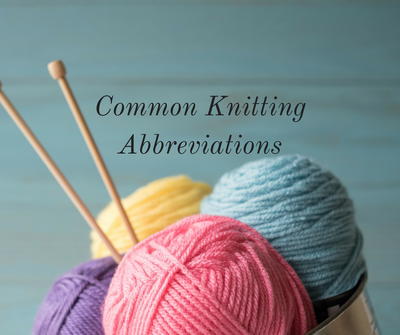Yarn Weight Categories 101
Discover the different knitting needle sizes, yarn types, and other knitting basics with this helpful printable graphic.

This Yarn Weight Categories Chart is an infographic with everything you need to know about knitting needles, yarn types, and projects. Since this printable yarn weight chart includes the yarn weight numbers from 0 to 7, the category, from lace to roving, the knitting needle sizes, in both US and metric measurements, as well as the ideal projects for each type of yarn, you're going to want to keep it nearby every time you're knitting.
Not only is this guide to yarn weights great for a seasoned knitter, this chart is super helpful when looking for free knitting patterns for beginners who don't know much about yarn weights and related information regarding knitting. It's so nice to have on hand, we recommend printing it out and laminating it for regular use.
Sign up for our free email newsletter for more amazing patterns and tutorials!
Yarn Weights Chart
| Yarn Weight | Name | Needle Sizes |
|---|---|---|
| 0 - Lace | Lace, Fingering 10-Count | 000-1 (US) 1.5-2.25 mm |
| 1 - Superfine | Fingering, Sock, Baby | 1-3 (US) 2.25-3.25 mm |
| 2 - Fine | Sport, Baby | 3-5 (US) 3.25-3.75 mm |
| 3 - Light | DK, Light Worsted | 5-7 (US) 3.75-4.5 mm |
| 4 - Medium | Worsted, Aran, Afghan | 7-9 (US) 4.5-5.5 mm |
| 5 - Bulky | Chunky, Craft, Rug | 9-11 (US) 5.5-8 mm |
| 6 - Super Bulky | Bulky, Roving | 11-17 (US) 8-12.75 mm |
| 7 - Jumbo | Roving | 17 + (US) 12.75 + mm |
About Yarn Weight Categories
The most common way to distinguish between different types of yarn is by weight. If you have knit in the past, or even if you have simply glanced over a knitting pattern in the past, you probably realized the yarn weight is indicated. Not surprisingly, the yarn weight categories coincide with the thickness of the pattern. A pattern that calls for superfine yarn will not be as heavy as one that calls for bulky yarn. Always consider the weight of the yarn prior to beginning a pattern, because you will have a good indication of the thickness and texture of the item even before you even cast on. Below, we have outlined a guide to yarn weights and how they differ from one another.
A Note On Ply
Yarn weight and yarn ply do not correspond. A 4-ply yarn with thin plies can easily by thinner than a 1-ply yarn with a thick ply.
Weight 0: Lace (Fingering 10-Count)
Weight 0 is the lightest weight of yarn. Lace yarn is ideal for making delicate items such as doilies and other lace designs. The fragile and intricate nature of lace yarn requires you to treat it gently in order to avoid unnecessary tangling or breakage. Handle lace yarn with care and you will be greatly rewarded with beautiful and feminine designs you will treasure forever.
Weight 1: Superfine (Fingering, Sock, Baby)
Much like weight 1 yarn, superfine yarn is great for lace and projects like baby clothes, socks, and shawls. The only major differences between this yarn and weight 0 is going to be whatever a particular pattern calls for. They are both so small that you could easily substitute it for weight 0 without noticing much of a difference. If you do this, however, be sure to use the proper needle size.
Weight 2: Fine (Sport, Baby)
Sport weight yarns, or "fine" yarn is also great for baby clothes, socks, and slightly bulkier lace. Many designers prefer to use weight 2 yarn for lace because you can more easily see stitch definition, and it's faster to work.
Weight 3: Light (DK, Light Worsted)
One of the more popular yarn weights, DK weight (which stands for double knit) is very versatile. When working with this weight of yarn, be sure to cast on and off loosely. Keep in mind that garments made with this yarn might not be appropriate for cold weather, because this type of yarn is not particularly thick or warm.
Weight 4: Medium (Worsted, Aran, Afghan)
Many, many knitting patterns call for medium weight yarn. Medium weight yarn is also known as "worsted." This yarn weight is popular among knitters of all skill levels. Worsted weight yarn provides excellent stitch definition in everything from hats, scarves, mittens, and sweaters. If you knit chunky stitches in a traditional Aran yarn of this weight, the warmth of the fiber can be enhanced. If you're a beginner knitter, you will certainly want to familiarize yourself with medium weight yarn, because it is a mainstay in the knitting realm.
Weight 5: Bulky (Chunky, Craft, Rug)
If you're looking to work up a substantial piece with a lot of weight to it, bulky yarn is the right choice. Materials of this weight produce fast projects on big needles, so you won't need to worry about working on a pattern for weeks and weeks before completion. Chunky scarves, blankets, and throws are perfect examples of patterns that use bulky or super bulky weight yarn. If you are a beginner knitter, using a higher category of weight is ideal, because it produces projects at a quick pace. On the other hand, advanced knitters will enjoy this yarn if they want to create something unique with a novel type of yarn. In order to achieve optimal loft, be sure to knit loose, large stitches. Unevenly spun yarn such as boucle, slubby, or chenille yarn will result in uneven knits, as well as a reduced stitch definition.
Weight 6: Super Bulky (Roving)
We all get a little lazy sometimes, okay? If you're an impatient knitter, like we are, you're gonna fall in love with weight 6. We like to use this yarn when making hats because they're always going to be super warm, and you can make them in an afternoon, like this pattern.
Weight 7: Jumbo (Roving)
While jumbo yarn is not always roving, it's often referred to as roving. This weight of yarn is most commonly used in arm knitting projects and super thick blankets.
Print or Download the Yarn Weights Chart
Note: Differences Internationally
To further complicate things, there are slightly different ways of classifying yarn between different countries. The biggest difference by far is the use of “Aran yarn” in the United Kingdom. Aran yarn is roughly equivalent to worsted weight yarn in the United States, though it is generally slightly thicker than most US worsted weight yarns. Historically, yarns weights were classified by plys in the UK. It used to be that a 2-ply yarn was roughly equivalent to a lace weight, while a 3-ply yarn might be similar to a DK weight.
The UK yarn industry has, for the most part, moved away from this way of denoting yarn weight, since it is now much easier to make thinner yarns with multiple plys. If you are traveling between countries, or using a pattern written in another country, you might want to double check that the suggested yarn for the pattern is the size you think it is. Most yarn has a suggested gauge printed on the label, if you’re in a pinch this is a good guideline to use if you also happen to have a chart that contains suggested gauges, like the one from the Craft Yarn Council.
At the end of the day, it is most important to choose the yarn best suited for your particular pattern. In most cases, the pattern will instruct you on the right weight yarn and needle size to use, but now you won't feel totally confused when you see funny words like "worsted," "aran," and "DK." Plus, when you're knitting from scratch, it's important to consider certain features of the item. If you want the item to keep you warm in the cold, perhaps consider bulky or super bulky weight yarn. If you want your scarf to breathe in hot weather, then lace might be your best bet.
With so many knitting yarn options, it's easy to see why the types of pieces you can knit are virtually limitless. Take this knowledge of different yarn weights and start experimenting - you'll never know what you come up with!
Up Next:
55 Worsted Weight Patterns
What's your go-to yarn weight?
















